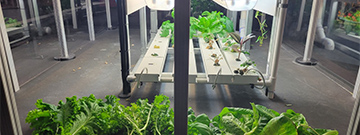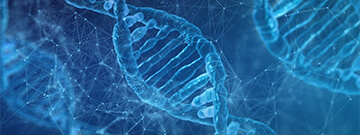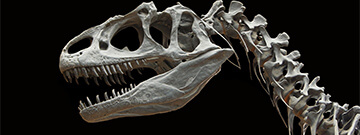
DNA and Its Capabilities
Have you ever wondered what makes us different? Every human, no, every organism on Earth is made up of cells, but even still we look so different from one another. The difference between each of us lies in our DNA.
DNA, which stands for deoxyribonucleic acid, is the genetic data found inside cells that contributes to an individual’s unique genetic makeup. You can compare DNA to a cake recipe. The recipe tells you what ingredients you need, how to mix the ingredients, and how to bake the cake. Like a cake recipe, DNA contains the directions for creating the body, one cell at a time. It provides information for what each cell is supposed to do, when it should do it, and it determines what the human will look like.
First, let’s look at the structure of this seemingly magical molecule. The structure of DNA is intricate. It is constructed by chemical elements that are chained together. There are two of these chains, and they are connected, taking on the appearance of a ladder that has been spiraled. The sides of the ladder are composed of substances called sugars and phosphates. DNA also has bases, which form the rungs of the ladder. Bases are a class of compounds found in DNA. There is a connection between each base on one strand and a base on the other strand. There are four bases: adenine, thymine, guanine, and cytosine. In each strand of DNA, these four components are replicated several times in various orders. About three billion pairs of these bases make up human DNA.
Every cell in the body has chromosomes, which contain DNA. DNA instructs cells on what proteins to produce. These proteins are primarily enzymes. Children inherit their parents’ DNA from them. Children often inherit characteristics from their parents, including complexion, hair, and eye color. A person’s DNA is a synthesis of the DNA from both of their parents. You can have traits from both your parents, but since it’s a mix, you’ll never look exactly like them.
With all these different possibilities, scientists wanted to know which genes determined different body characteristics. The Human Genome Project did just that; it was a global initiative to identify the precise genetic makeup of the genes that regulate growth and development. Scientists from all over the world participated in the research and collaborated with the effort lasting three years. The Human Genome Project’s success made it easier for people to comprehend how evolution works. Additionally, it helped researchers who sought to diagnose, cure, and prevent diseases that are inherited, or handed down from one generation to the next.
DNA is a vital molecule for all life. Without DNA, cells would not be able to carry out functions, and organisms would not be able to survive. It’s important we keep learning about DNA and all of its capabilities!
Source:
“What Is DNA?: Medlineplus Genetics.” ![]() MedlinePlus, U.S. National Library of Medicine
MedlinePlus, U.S. National Library of Medicine
“The Human Genome Project.” ![]() Genome.gov
Genome.gov
Scientific Peer Review by Alysia Mandato
Aneri Shethji:
Aneri Shethji is a 10th grader at North Allegheny Intermediate High School. She is very passionate about science and writing and enjoys getting involved with the community. In her free time, Aneri spends time with friends and family and loves getting outside. She can’t wait to learn more about all that science has to offer, and help others learn it too!

On April 8, 2024, we will witness a mesmerizing event. A total solar eclipse is upon us, and here at the Science Center, we can explore this celestial phenomenon in many ways.
But first, what is this event? A ...

Climate change is a big deal. We’ve all seen news stories about greenhouse gas emissions, rising temperatures, and the hole in our ozone layer. However, what tends to sometimes be overlooked is climate change’s ...

In the captivating world of health care, a fascinating transformation is taking place—a rise in Artificial Intelligence, or AI! Picture a world where smart machines team up with doctors to revolutionize medicine, making ...

Hydroponics, a contemporary farming method, redefines how we grow plants, offering a fresh approach to cultivating crops that differs from traditional soil-based farming. This innovative technique doesn’t rely on soil ...

In our solar system, the eight planets—Mercury, Venus, Earth, Mars, Jupiter, Saturn, Uranus, and Neptune—are talked about more than anything. While the ...

Quantum computers are on the forefront of technological advancement. These machines, unlike any traditional computers you’re familiar with, harness the ...

The Earth is a spectacle of constant movement. Periodically, it commands our attention with displays of power—earthquakes. These events are tied to the intricate movements of the Earth's tectonic plates. Tectonic ...

Have you ever wondered how investigators in crime shows manage to identify suspects with such accuracy? Dusting for fingerprints isn’t always feasible in many cases, so the true answer lies in a different type of ...

Writers: Evan Allen, Ricardo Aguilar, Jillian Pensenstadler, Amelia Foley, and Ian Lisien
Once a center of industrial prowess, Pittsburgh has undergone a remarkable transformation, ...

Have you ever questioned what happens to the food you consume? Prepare yourself for a thrilling voyage as we go through your digestive system! We'll look at ...

When someone falls on their arm, they immediately head to the hospital to see if it is hurt. X-rays are used by doctors to examine your bones more ...

Even though dinosaurs became extinct about 65 million years ago, we know quite a bit about them, including what they ate, where they lived, and even what ...



